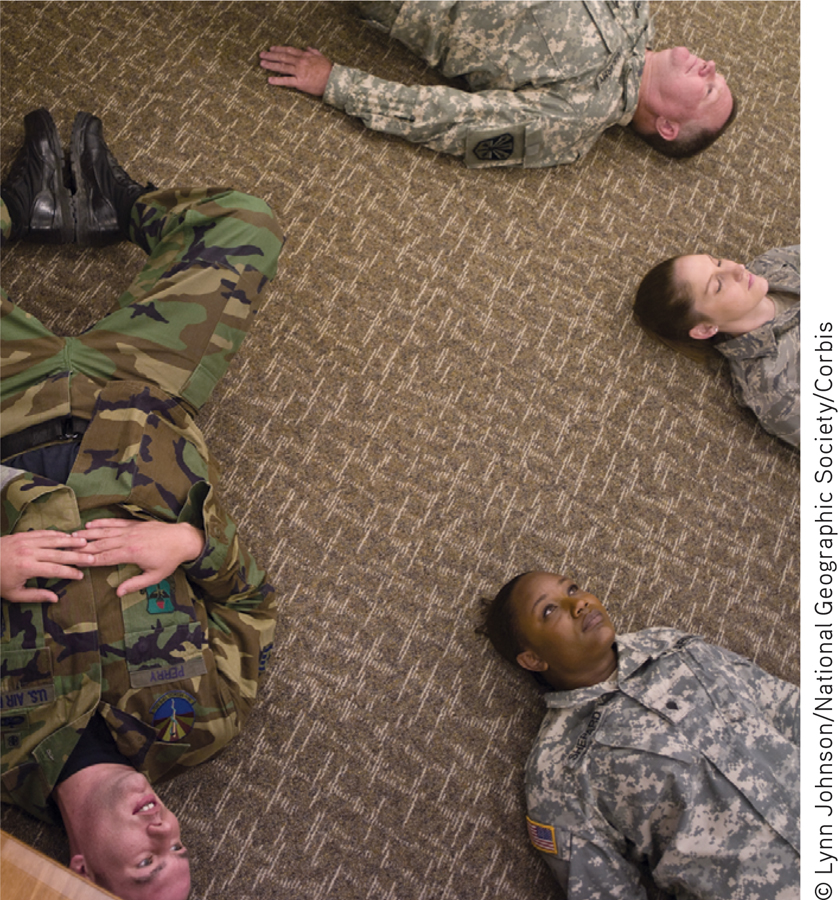50.3 Posttraumatic Stress Disorder (PTSD)
50-
As an Iraq war soldier, Jesse “saw the murder of children and women. It was just horrible for anyone to experience.” After calling in a helicopter strike on one house where he had seen ammunition crates carried in, he heard the screams of children from within. “I didn’t know there were kids there,” he recalled. Back home in Texas, he suffered “real bad flashbacks” (Welch, 2005).
Jesse is not alone. In one study of 103,788 veterans returning from Iraq and Afghanistan, 25 percent were diagnosed with a psychological disorder (Seal et al., 2007). Some had traumatic brain injuries (TBI), but the most frequent diagnosis was posttraumatic stress disorder (PTSD). Typical symptoms include recurring haunting memories and nightmares, a numb feeling of social withdrawal, jumpy anxiety, and trouble sleeping (Germain, 2013; Hoge et al., 2004, 2006, 2007; Kessler, 2000). Although many battle-

The greater one’s emotional distress during a trauma, the higher the risk for posttraumatic symptoms (Ozer et al., 2003). Among American military personnel in Afghanistan, 7.6 percent of combatants and 1.4 percent of noncombatants developed PTSD (McNally, 2012). Among New Yorkers who witnessed or responded to the 9/11 terrorist attacks, most did not experience PTSD (Neria et al., 2011). After experiencing a traumatic life event, about 5 to 10 percent of people develop PTSD (Bonanno et al., 2011). PTSD diagnoses among survivors who had been inside the World Trade Center during the attack were, however, double the rates found among those who were outside (Bonanno et al., 2006).
About half of us will experience at least one traumatic event in our lifetime. Why do some people develop PTSD after a traumatic event, but others don’t? Some people may have more sensitive emotion-
Some psychologists believe that PTSD has been overdiagnosed, due partly to a broadening definition of trauma (Dobbs, 2009; McNally, 2003). Too often, say some critics, PTSD gets stretched to include normal bad memories and dreams after a bad experience. In such cases, well-
Most people, male and female, display an impressive survivor resiliency, or ability to recover after severe stress (Bonanno et al., 2010). For more on human resilience and on the posttraumatic growth that some experience, see Module 54.
RETRIEVAL PRACTICE
- Those who express anxiety through unwanted repetitive thoughts or actions may have a(n) __________-__________ disorder.
obsessive-
- Those with symptoms of recurring memories and nightmares, social withdrawal, jumpy anxiety, numbness of feeling, and/or insomnia for weeks after a traumatic event may be diagnosed with __________ __________ disorder.
posttraumatic stress